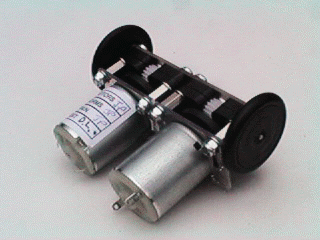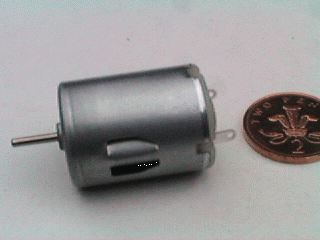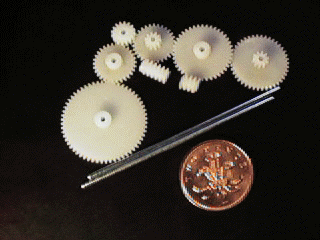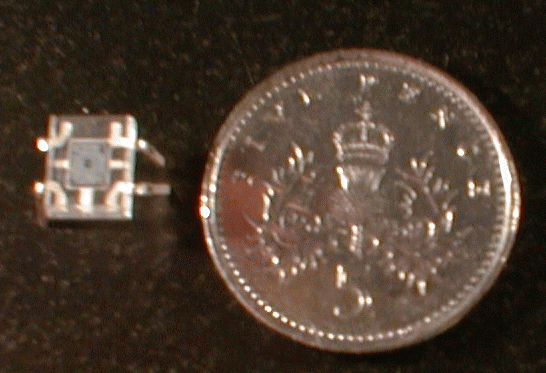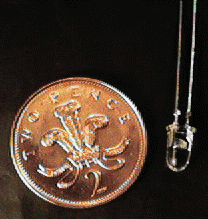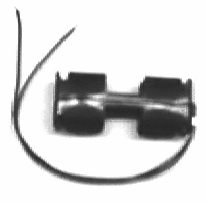|
|
These materials can be used for both the schools competition and the maze-solving competition.
DRIVE TRAIN
This is the drive train assembly used in the DASH series of Micromice. It consists of two 4.5-12V DC motors with worm gear drive to the wheels. The wheels are 32mm diameter fitted with O-ring tyres.
Unlike the DASH FREE drive train, the motor spindles are fitted with photo-interrupters giving 8 index positions. A phototransistor and infra-red LED are fitted for each motor.
The overall width of the drive train is approximately 80mm.
DC Motor
This is the motor used in our drive trains. It is a Mabuchi RC-280SA-20120 motor giving 29g.cm torque at 6400 rpm taking 0.57A from a 6V supply at maximum efficiency. The stall torque from a 6V supply is 175g.cm at a current of 2.85A.
This is a powerful beast. You should be able to make mice with a top speed over 1 metre/second using it.
Gear Sets
The set contains:-
two 75mm long 2mm diameter steel shafts,
one 10 by 6 mm worm gear
one 6 by 6mm worm gear
one 16 tooth 9mm dia. gear
one 30 tooth 16 mm dia. gear
one 42 tooth 22 mm dia. gear
one 60 tooth 31mm dia. gears
one16 mm dia. 30/10 tooth compound gear
one 22 mm dia. 42/10 tooth compound gear.
All the gears push fit onto the shafts. You will need two sets; one for each side of your mouse.
Hamamatsu sensor chips
We use these sensors in the DASH FREE and DASH micromice.
The photo IC drives one or more LEDs with pulsed light and responds only to light that is phase-locked to these pulses. It is very tolerant of sunshine and fluorescent lights. DASH micromice work well even with full sunlight and shadows on the maze.
The photo-IC drives an LED directly and only needs this and a decoupling capacitor to give a logic output. We add a second LED to show whether the output is high or low to help when positioning the sensor.
HP HLMP4101 LED
This is a bright, narrow angle visible-red LED that we use for DASH Micromice. It gives 1000 mcd at 20mA with a viewing angle of 8 degrees. A flat on the body denotes the cathode.
We use a single LED with each Hamamatsu S4282-11 photo-IC in DASH FREE. Where we need more sensing range we buffer the photo-IC with a power transistor driving one or two LEDs.
We get area coverage with multiple LEDs all driven via a transistor from one photo IC. Separate limiting resistors tailor the brightness of each LED to suit its distance from the sensor. DASH-2 has up to 4 LEDs with one photo IC to sense that it is too close to a wall. This arrangement avoids "dead spots".
We use visible LEDs instead of infra-red as it is much easier to see where the light is going. A small amount of stray light can completely wreck a sensing set-up. We control stray light with a combination of Tipp-Ex and grommets!
Battery box
This is a simple solution for the battery holding problem. These battery boxes can hold two AA size cells. We use them in DASH FREE, for carrying the 4 nicads that supply the power. Some people may want an extra one of these holders to run their DASH FREE at higher voltage for more speed.
 HOME PAGE
HOME PAGE PIXIE
PIXIE DASH FREE
DASH FREE